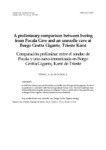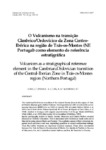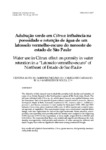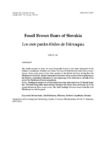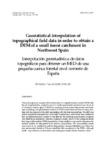Buscar
Mostrando ítems 11-20 de 37
A preliminary comparison between boring from Pocala Cave and an unroofle cave at Borgo Grotta Gigante, Trieste Karst
(Universidade da Coruña, 2001)
[Abstract] In 2000 five boring were performed in a unroofle cave at Borgo Grotta gigante, the third in particular is correlable with the boring outside Pocala Cave. The first result has been obtained by observing the absence ...
O Vulcanismo na transição Câmbrico/Ordovícico da Zona Centro-Ibérica na região de Trás-os-Montes (NE Portugal) como elemento de referência estratigráfica
(Universidade da Coruña, 2001)
The Cambrian/Ordovician transition of the Central Iberian Zone in the region of Trás -os-Montes displays quite distinct features. One is gradational with no noticeable unconformity: Moncorvo (REBELO et al , 1983); S. ...
Archaic and recent Ursus spelaeus forms from Lombardy and Venetia Region (North Italy)
(Universidade da Coruña, 2001)
[Abstract] Some Ursus spelaeus Rosenmüller-Heinroth, 1784 cranial and mandibular remains coming from Northern Italy (Lombardy Region -Buco dell’Orso Cave, Laglio, Como-) and from Venetia Region (Cerè, S. Donà di Lamon and ...
Adubação verde em Citrus: influência na porosidade e retenção de água de um latossolo vermelho-escuro do noroeste do estado de São Paulo
(Universidade da Coruña, 2001)
[Abstract] The objective of this research was to study the porosity, bulk density and retention of water of an Oxisol, located in the Northwestern region of São Paulo state, Brazil. The soil was cultivated with Citrus ...
Fossil Brown Bears of Slovakia
(Universidade da Coruña, 2001)
[Abstract] The fossil remains of bears are very frequently found in the karst sediments of the Western Carpathians. Besides cave bears, two taxa of fossil brown bears (Ursus tauba -chensis, Ursus arctos priscus) have been ...
Age structure and sex ratio of cave bears in the Zoolithenhöhle, southern Germany
(Universidade da Coruña, 2001)
[Abstract] This paper reports the results of the study of age and sexual composition of the cave bear (Ursus spelaeus) ‘population’ of the Zoolithenhöhle, a classic cave site in Bavaria, southern Germany. Radiocarbon dating ...
Geostatistical interpolation of topographical field data in order to obtain a DEM of a small forest catchment in Northwest Spain
(Universidade da Coruña, 2001)
[Abstract] This article gives an example of the elaboration of a digital elevation model (DEM) with the aid of geostatistics, using the case of a small experimental catchment near Arcos de la Condesa in Galicia, Spain. A ...
Cave Bear ancestors
(Universidade da Coruña, 2001)
[Abstract] The lineage of the cave bear Ursus deningeri--> U. Spelaeus is well known, but to draw a limit in this evolution is not easy. The real difficulty is met when this cave bear lineage has to be linked to its ...
The Evolution of Metapodial Bones in the Cave Bear Group and its biostratigraphical Implications
(Universidade da Coruña, 2001)
[Abstract] A short description of the methods is followed by some central results obtained from the analyses of metapodial bones in the cave bear group from sites in Austria and Italy. The evolution of metapodials shows, ...
Preliminary report on sediments from Pocala Cave: sedimentological and heavy mineral analysis
(Universidade da Coruña, 2001)
[Abstract] In 1999 two borings were performedin the area of Pocala Cave, one outside the cave and the other inside in the cave. In particular four samples of the first boring were studied.It seems that mineralogy is strictly ...


